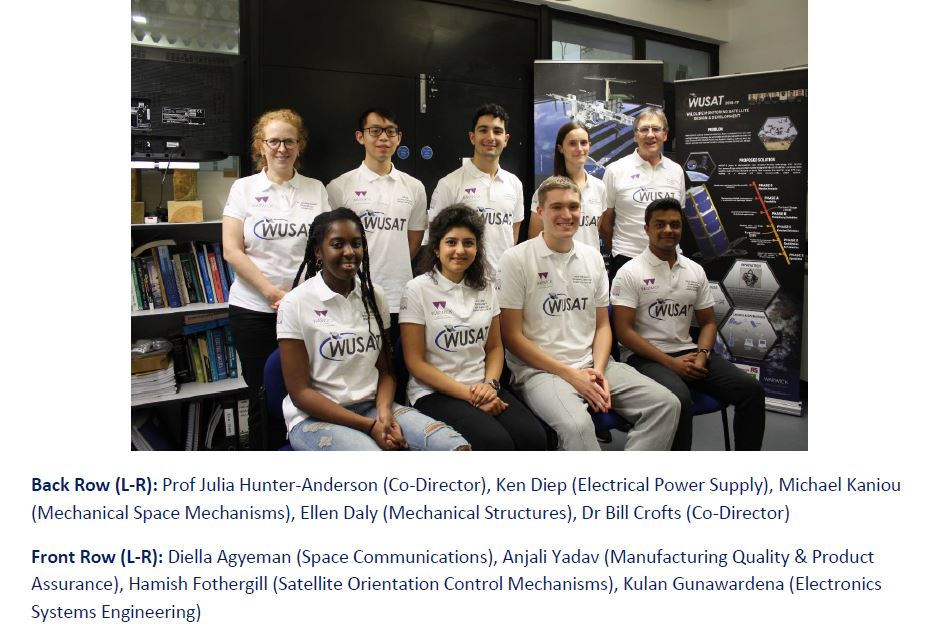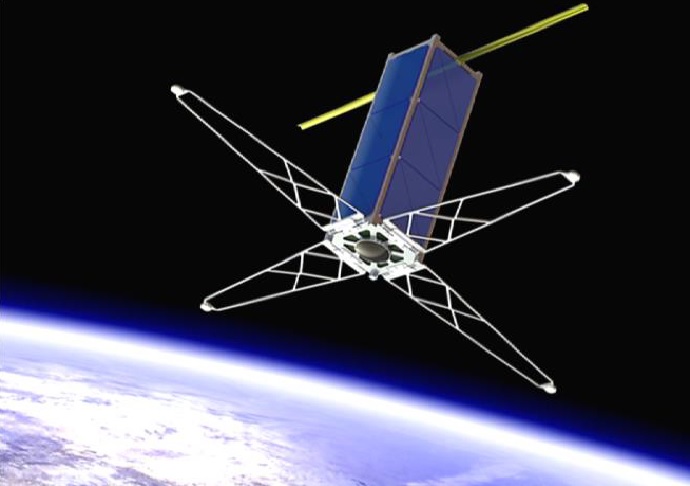Ever since the first one was launched by the Soviet Union on October 4th 1957 artificial satellites have steadily played more and more of an important part in our social infrastructure. Whether it’s weather and climate information, internet connectivity in rural locations, military surveillance, entertainment or communications, satellites are integral to our modern daily lives.
When first launched the satellite was the size of a beach ball, but as mission goals increased so did the size of the satellites, with many now as big as a large car. With the evolution of technology, in particular the miniaturisation of electronics, and a desire for cheaper and simpler solutions, we have seen a gradual emergence of the CubeSat. CubeSats, as the name suggests, are configured as a cube shape typically 10cm a side and weighing around one kilogram, making them a cost-effective option to be carried into orbit as a secondary launcher payload with larger satellites. They can be used in multiples of the unit for more complicated missions. They are commonly used in low earth orbit for observation and research projects, but with the advance and improvement through new technologies they are now being used for projects that venture outside of the earth’s orbit, such as the experimental Mars Cube One CubeSats, which performed as communications relay satellites for the NASA Insight Mars landing in November 2018.
Multi-disciplined, multi-talented Team
The Warwick University Satellite Project (WUSAT) was set up in 2006 as a multi-disciplinary undergraduate team to help students gain experience in satellite engineering, giving them the opportunity to explore the technology and collaborate with researchers on meaningful projects. This has led to the development of its WUSAT-3 CubeSat, designed to demonstrate a novel approach to monitor wildlife species and support conservationists and biologists.
Dr Bill Crofts, who leads the WUSAT project explains: “WUSAT is relatively unique as an undergraduate satellite engineering team. Each year a new multi-disciplinary 4th Year MEng team take over from the previous team to drive each current project forward. We have worked on European Space Agency sponsored projects for eight of the thirteen years we have been in existence. We now have alumni of approximately 80 former WUSAT engineering students working in industry – many are working for space technology companies. Approximately one-fifth of our engineers have been female. We currently have collaborative assistance from 12 top-class companies, and over the past thirteen years we have worked with over 40 companies in our various satellite missions.”
WUSAT-3 - The mission
Using four deployable antennae, an RF signal direction finder and an accurate orientation system, the satellite aims to demonstrate the capability to track birds and animals on Earth which have been fitted with smart tags. The antenna detects the signal emitted from a test smart tag which triggers it to take a photo, marking the location on Earth through map coordinates. An operational system could help with identifying animal migration patterns, understanding animal behaviour, as well as monitoring numbers to predict the extinction of species. Currently, tracking wildlife has been labour intensive using terrestrial methods involving handheld antennas and global positioning systems. WUSAT-3’s demonstration mission could prove to be a great step forward in both time efficiency and the expansion of the range of species that could be monitored.
WUSAT-3 has been designed to be a complementary system to the International Cooperation for Animal Research Using Space (ICARUS) hardware which is onboard the International Space Station (ISS). The team’s CubeSat complements the Icarus initiative, led by the Max Planck Institute for Ornithology, which is looking to obtain more in-depth insights into worldwide tracking of all kinds of animal migration paths. However, unlike the ICARUS system, the WUSAT-3 system does not require the tag to collect GPS data, so the hope is that the tag can be smaller and lighter, and hence allow the possibility of tracking species that are currently too small to be tagged.
Dr Bill Crofts sums up the WUSAT project explaining: “WUSAT-3 is a highly ambitious leap forward, but the excellent Warwick engineering students I have worked with over the past thirteen years will be more than capable of achieving this extraordinary engineering objective. A Warwick satellite being launched from the International Space Station will be an enormous achievement for all concerned – the team, our collaborating companies, the School of Engineering at Warwick, and Warwick University itself.”
The target is for WUSAT-3 to be launched to the ISS via a European Space Agency launch programme, where it will be deployed into low earth orbit in 2021.
RS is proud to be one of the companies supporting the WUSAT team with the supply of various products including batteries, capacitors, cable and semiconductors, to name a few.


It's not every day that you get to be part of a project that launches something into Space



 Space is so exciting - the things that we've done are amazing really!!
Space is so exciting - the things that we've done are amazing really!!

